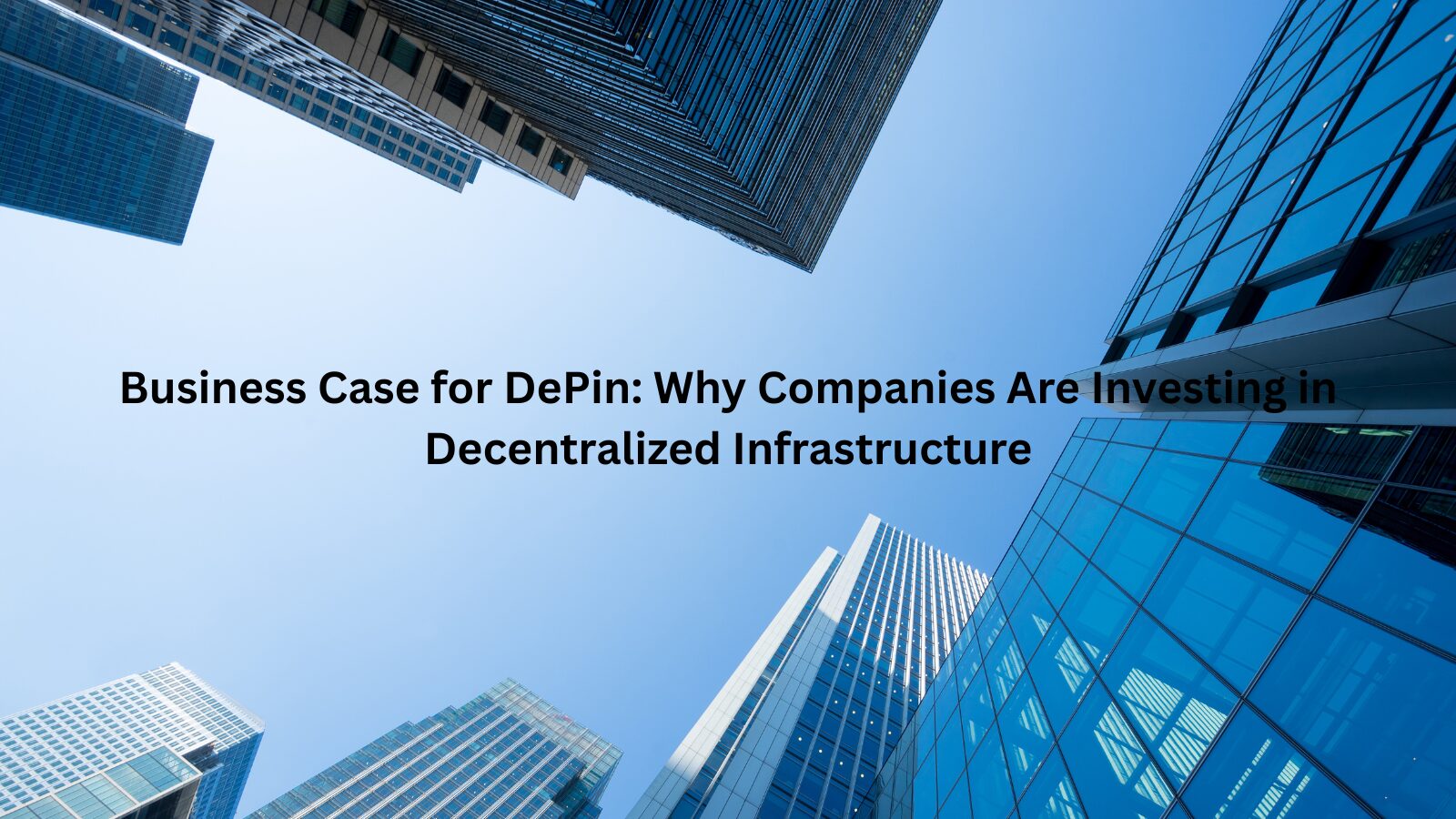DePin steps in as the answer to the pain points caused by traditional infrastructure annihilating alternatives: the high costs, replicas of Daedalus’s labyrinth that have extreme difficulty scaling, and gaping core vulnerabilities. The need for decentralized alternatives that are cheaper, more beneficial, and far more resilient to failure systems has caused an interest boom for DePin.
Infrastructure as a whole fundamentally operates on a singular framework which does not work anymore. Resources need to be distributed across peer to peer networks. With DePin solutions, the uttered impossibility of achieving operational flexibility is made possible which leads to unparalleled cost reduction.
Central market data also indicates that the sector, with fundraising volume up 296% year over year, the total market cap grew 400% to $20 billion.
This assessment aims to support the case for adopting decentralized physical infrastructure networks (DePin) by looking at the clear cost, performance, and risk reduction benefits.
The Financial Case for DePin (ROI & Cost Savings)
The operational expenses incurred in managing a company’s infrastructure reveals financial benefits of adopting a decentralized model. DePin solutions have a proven record of saving 50-80% when compared to traditional service providers in the following areas:
Cloud Compute Costs
- Traditional providers (AWS/GCP/Azure): 0.10−0.30 per GPU hour
- DePin alternatives (Render, Akash): 0.05−0.15 per GPU hour → 50%+ savings
Storage Costs
- Centralized cloud (AWS S3): $0.023/GB/month
- DePin networks (Filecoin, Arweave): 0.005−0.015/GB/month → 65-80% savings
These dramatic cost reductions have attracted a lot of investor interest. Since 2022, the DePin sector has raised over $1.2 billion in venture capital funding, with an investment focus in three areas:
- Decentralized compute solutions (40% of funding)
- Wireless infrastructure networks (25%)
- Distributed storage platforms (20%)
The argument supporting DePin can also be made from a cost perspective that is more complex than simple calculations. Deploying these solutions at scale will save organizations millions annually on their operational budgets while proving the same level and often better service reliability.
Performance, Scalability & Resilience: Why DePin Outperforms
Beyond cost savings, decentralized infrastructure delivers measurable advantages in speed, scalability, and reliability critical factors for modern enterprises.
1. Speed & Latency Improvements
DePin networks are redefining performance benchmarks:Helium Network provides 5G coverage at 1/10th the cost of traditional telecoms, with comparable latency and reliability.
While Akash Network deploys cloud workloads 3x faster than centralized providers by eliminating provisioning bottlenecks.
These gains aren’t marginal, they enable real-world use cases like: Low-latency IoT networks for smart cities, Rapid-scaling AI model training, Lag-free remote work infrastructure.
2. Scalability That Grows With Demand
DePin’s distributed architecture avoids the scaling limits of centralized systems. Filecoin now stores 20+ exabytes of data (vs. AWS’s 100+ exabytes) but is growing 200% year-over-year, the fastest rate in cloud storage.
On the other hand, Render Network serves 4M+ GPU hours monthly, a 300% increase since 2023, demonstrating elastic capacity for GPU-heavy workloads like AI and 3D rendering.
Risk Mitigation & Resilience
Traditional infrastructure carries inherent risks from costly outages to regulatory restrictions that DePin effectively mitigates through its distributed architecture.
- Uptime & Operational Resilience
Centralized systems remain vulnerable to single points of failure. In 2023 alone, AWS experienced 7 major outages, each costing enterprises over $1 million per hour in downtime.
By contrast, decentralized networks like Filecoin maintain 99.99% uptime by distributing data across thousands of independent nodes.
This “failure-proof” design ensures continuity even if multiple nodes go offline, a critical advantage for financial services, healthcare, and other uptime-sensitive industries.
- Regulatory & Censorship Resistance
DePin’s decentralized nature makes it inherently resistant to government restrictions that often cripple traditional cloud services. Unlike centralized providers vulnerable to regional shutdowns, Ethereum-based DePin networks continue operating even when authorities block conventional platforms.
This resilience comes from distributed architecture – with no single point of control, governments can’t easily restrict access. For example, while some countries have banned major cloud providers, decentralized alternatives keep businesses running through peer-to-peer networks.
The system’s smart contract backbone also prevents arbitrary interference, ensuring uninterrupted service. This censorship resistance proves particularly valuable in restrictive markets, where DePin offers reliable infrastructure when traditional options fail.
Enterprise Adoption & Industry Validation
Leading companies are adopting DePin to solve critical operational challenges
Leading companies are adopting DePin to solve critical operational challenges. AI startups like Ritual and Bittensor access decentralized GPU networks at 50-60% lower costs than traditional clouds, enabling affordable model training.
Telecom innovators like Helium Mobile partner with T-Mobile to deploy 5G infrastructure at 60% reduced cost using decentralized nodes.
These real-world implementations demonstrate DePin’s ability to deliver enterprise-grade services while dramatically cutting expenses.
Corporate Backing
Industry giants are strategically embracing DePin. NVIDIA invests in decentralized AI infrastructure to expand GPU access, while Microsoft integrates Filecoin with Azure for hybrid storage solutions.
Such partnerships validate DePin’s technical maturity and provide crucial support for wider enterprise adoption. These endorsements from tech leaders confirm DePin’s transition from experimental technology to viable infrastructure alternatives.
Challenges & Risks: Barriers to Adoption
While DePin offers compelling advantages, enterprises must weigh several key challenges. Some of them include:
1. Liquidity & Financial Risks
The DePin ecosystem faces notable financial volatility, with many platform tokens experiencing 30%+ monthly price swings far exceeding the stability of traditional cloud contracts. This unpredictability creates budgeting challenges for enterprises accustomed to fixed-cost infrastructure models.
While some projects are exploring stablecoin payments or fiat gateways, most still require native token usage, exposing adopters to crypto market fluctuations that could significantly impact operational costs.
2. Adoption Barriers & Market Readiness
Despite its potential, DePin remains in early enterprise adoption, with under 5% of businesses currently utilizing these solutions.
The slow uptake stems from several factors: technical integration complexities with existing systems, lack of standardized service level agreements comparable to major cloud providers, and limited awareness among corporate IT decision-makers.
Additionally, the absence of large-scale case studies makes some enterprises hesitant to transition mission-critical workloads.
Conclusion
DePin is projected to capture 10% of the cloud market by 2030, a 100B market cap opportunity as enterprises increase adoption cost and efficient model. Current data shows adopters save 2.3M annually on average, demonstrating clear financial benefits.
While challenges like token volatility exist, the technology’s 50-80% cost savings and built-in resilience make it a strategic long-term solution.
As hybrid models bridge the gap to mainstream adoption, early movers stand to gain a competitive edge in both operational efficiency and future-proof infrastructure. The next decade will likely see DePin evolve from a niche alternative to core enterprise infrastructure.






